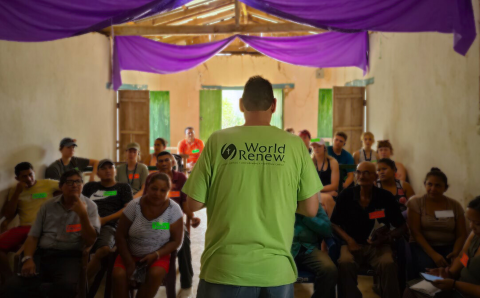I am a city boy, but I love green and growing things. At one time, my wife and I had more than 150 potted and garden plants. We had many delicate orchids, several types of colorful hibiscus, palm trees, a wide variety of cacti, massive creeping pothos plants with plate-sized leaves, lilies, variegated crotons, bright bromeliads, and more. Since we were living in Haiti at the time, these plants thrived outside in the tropical climate.
Until they didn’t. Our plants were always infested with mites, aphids, scale insects, and leaf-devouring snails. The tropical sun would quickly dry and wilt them, and the monsoon rains would often rot the roots. Our plants were in constant need of fertilizer, pesticide, watering, repotting, and renewal.
Plants are apt metaphors for the church. The psalms compare the righteous to trees (Ps. 1). Isaiah compared Israel to a vineyard (Isa. 5). Jesus talked constantly about seeds and growth as a metaphor for God’s people (Mark 4; Matt. 13). Paul saw himself as a gardener planting seeds (1 Cor. 3:5-9).
Like our gardens and houseplants, the church is also vibrant and fragile. At times it amazes us. Members come together around hurting members. Believers share Christ’s love with nonbelievers through words and acts of mercy. Seniors and youth encourage and mentor one another.
Yet the church is often wracked by divisions and stymied by sin. Pastors and leaders publicly and privately struggle. The church loses sight of its mission. Often it slides into cynical apathy, going through the motions of preaching and worship without conviction. Slowly but surely, roots rot and leaves wilt.
Here is where the metaphor breaks down. Wise and experienced gardeners with the right chemicals and soils can usually coax an ailing plant back to health. With a complex system like a congregation, it’s not so simple. Perhaps at one time we thought it was. With our books, conference certificates, and theological degrees in hand, we thought we could solve the problem of church decline.
But even while we tried to balance the equation, the variables and constants were changing. Our culture’s affinity with Christianity waned. Society unleashed cultural and moral changes on the church. The climate in which the church lives is in many cases unrecognizable to preceding generations. The church needs to be renewed. But how?
Maybe we should start by reevaluating our metaphor. We leaders often see ourselves as gardeners. But who plants the seeds and sends the sun and rain? The sooner we remember that Jesus is the planter, gardener, and grower of the church, the sooner we can take the first step of renewal: surrender.
When confronted by wilting and root-rot in the church, we must first surrender ourselves to the Lord. In his book In Dying We Are Born: The Challenge and the Hope for Congregations, Peter Bush writes that for renewal to take root, a congregation must “move from praying ‘Take this cup from us’ to praying ‘Not our will, but thine be done.’” It is at that moment that our faithful Gardener’s rehabilitation begins in earnest.
My constant prayer and hope for our Christian Reformed congregations is that they surrender themselves more and more to the Gardener. Perhaps upheaval in our cultures and churches will help us get there. I don’t know what renewal looks like, though I’m sure in many cases there isn’t a straight line from wilted leaf to mighty tree. In fact, often it’s more like the banana tree—the stem has to die for a new shoot to come to life.
But here’s what I do know: When God plants and nurtures the seed, it produces a crop, “some thirty, some sixty, some a hundred times what was sown” (Mark 4:20).
About the Author
Rev. Zachary King is the general secretary of the CRCNA. He is a member of Cascade Fellowship Christian Reformed Church in Grand Rapids, Mich.









